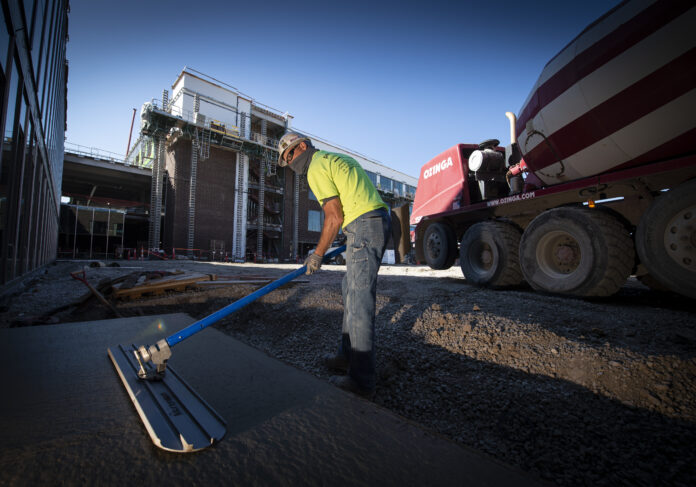
When we say we’re better prepared to meet workforce challenges, we mean it.
Recent data backs up the fact that union construction is doing a better job of meeting workforce needs even in today’s challenging environment.
An Associated General Contractors of America’s (AGC) survey of more than 5,000 of their member contractor firms found that “the skilled labor shortage is much less severe in the union segment of the industry.” Even during the pandemic, union construction’s pipeline of skilled workers fared far better than the non-union competition.
This is no accident.
For many years, Building Advantage and our partner unions and contractors have jointly made investments in the construction workforce and it’s paying off even in this tight labor market.
According to the report, “Nonunion contractors were 27 percent more likely to report that their local pipeline for supplying well-trained craft workers was “poor” compared to their union peers.”
Decades ago, Milwaukee’s trade unions and leaders in the construction industry realized that our workforce was aging, and we all needed to work together to replace the growing number of retirees.
Local unions and contractors worked in tandem to develop a strong pipeline of highly trained trade apprentices through Joint Apprentice Training Centers which develop and build up the next generation of highly skilled workers.
Since then, the industry has formed councils like Building Advantage and leaned on organizations like WRTP|BIG STEP to get the word out about the benefits of registered union apprenticeship and a career in the trades.
According to data collected from the AGC and analysis by the Illinois Economic Policy Institute, the union construction industry is better prepared for any workforce shortages compared to their non-union counterparts.
In an industry where time is money, having a reliable workforce is crucial to every project schedule. The advantage is evidenced by the report which found that, “union contractors are 21 percent less likely to experience delays in project completion times due to shortages of workers compared to nonunion contractors.”
Ultimately, the data has shown that because there is joint investment in our apprenticeship programs, “union contractors are better able to attract, develop, and retain skilled construction workers.”
Maintaining a successful pipeline of apprentices is far easier when you can offer the best wages, benefits and working conditions in the business.
Not only that, “union contractors were more diverse—as examples, they were 10 percent more likely to employ Black and African American workers and 8 percent more likely to employ military veterans.”
Union construction is actively working to make the industry more inclusive and representative of the communities they build in.
When you partner with the union construction industry, you can expect a highly skilled workforce with contractors that are prepared for every project’s needs.
Experience the union advantage on your next project. Visit buildingadvantage.org to learn more.




